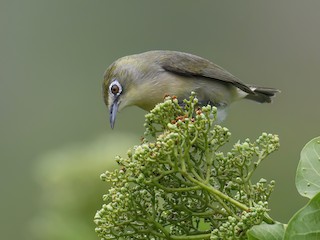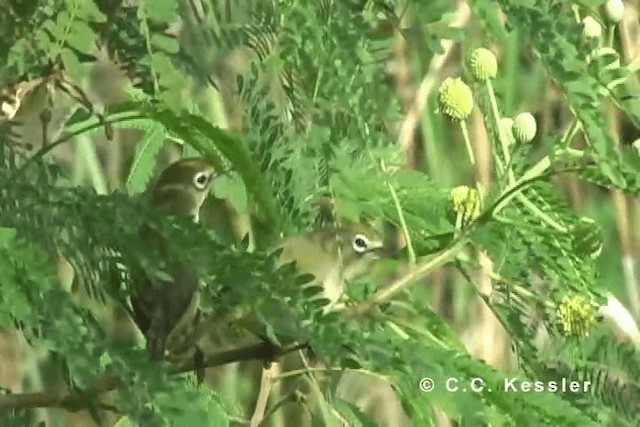Bridled White-eye Zosterops conspicillatus Scientific name definitions
Revision Notes
Sign in to see your badges
Species names in all available languages
| Language | Common name |
|---|---|
| Bulgarian | Марианска белоочка |
| Catalan | zosterop embridat |
| Croatian | guamska bjelooka |
| Dutch | Marianenbrilvogel |
| English | Bridled White-eye |
| English (United States) | Bridled White-eye |
| Estonian | guami prilliklind |
| French | Zostérops bridé |
| French (Canada) | Zostérops bridé |
| German | Guambrillenvogel |
| Japanese | マリアナメジロ |
| Norwegian | tøylebrillefugl |
| Polish | szlarnik pacyficzny |
| Slovak | okánik uzdičkový |
| Spanish | Anteojitos Embridado |
| Spanish (Spain) | Anteojitos embridado |
| Swedish | marianerglasögonfågel |
| Turkish | Halkalı Gözlükçü |
| Ukrainian | Окулярник говіркий |
Revision Notes
Natalia C. García revised the account. Philipp N. Maleko copyedited the account.
Zosterops conspicillatus (Kittlitz, 1833)
Definitions
- ZOSTEROPS
- zosterops
- conspicillata / conspicillatum / conspicillatus
The Key to Scientific Names
Legend Overview
Introduction
The Bridled White-eye is a small passerine species endemic to the Mariana Islands in the Pacific Ocean. It is the most common land bird on the islands of Saipan, Tinian, and Aguijan, but it went locally extinct on the island of Guam after the introduction of the brown tree snake (Boiga irregularis). It can be distinguished from other species in the genus by the combination of its pale throat and yellow underparts. The subspecies Zosterops conspicillatus saypani was considered a separate species until recently. Like other members of the Zosterops genus, it is a highly social, non-territorial species that can be found in flocks of up to 50 individuals throughout the year, even when some pairs are nesting. This versatile forager can be found from the ground to treetops, but mostly in the outer canopy. It apparently lacks an annual cycle, as breeding, molting, and flocking can occur throughout most of the year.














































